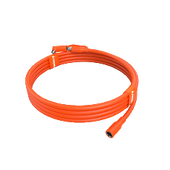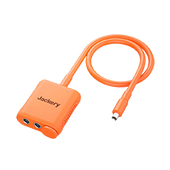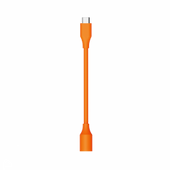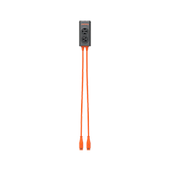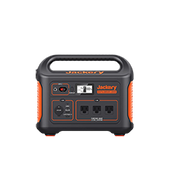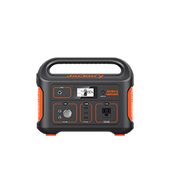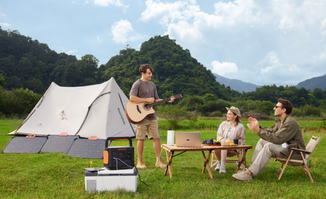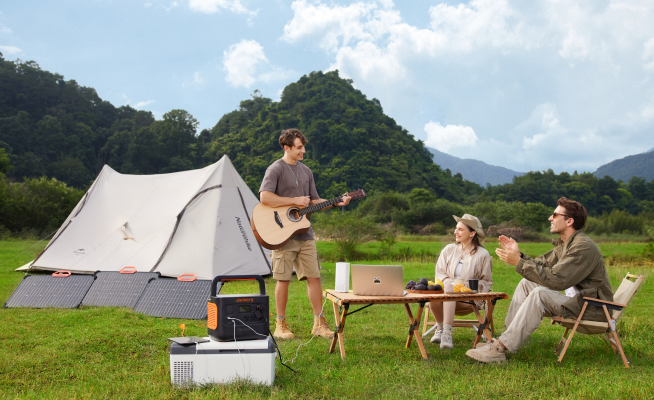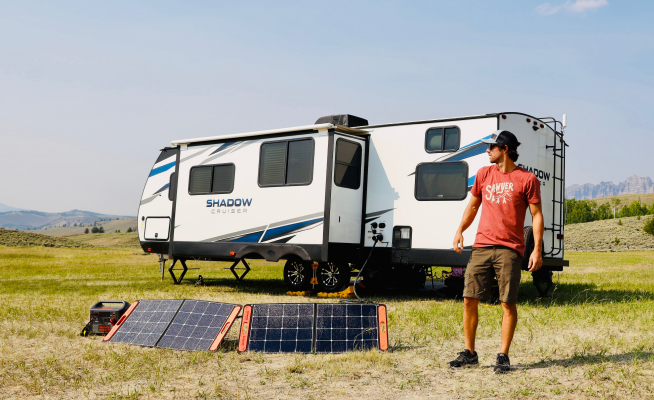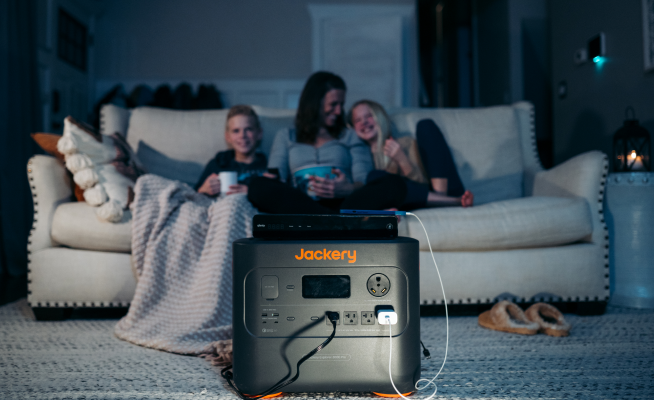Solar Powered Dehumidifier: Can A Solar Generator Power Dehumidifiers
There are various reasons to buy a solar-powered dehumidifier, such as to lessen odors in the house, prevent mold development, and reduce skin and respiratory system irritation. A dehumidifier that runs on solar electricity is a huge advantage.

The average dehumidifier uses 0.427 kWh per hour, while the average dehumidifier uses 483 Watts. This indicates that if kept on for 24 hours, it can consume almost 10.24 kWh.
On this page, you will learn what a solar-powered dehumidifier is, how it works, and the solar-powered dehumidifier vs. solar generator for a dehumidifier. Here suggest Jackery solar generators be your ideal dehumidifier power source.
What is Solar Powered Dehumidifier
A dehumidifier purifies the air, eliminates dangerous elements, and produces a dryer, more tranquil outcome. It can cut the air's dampness by thirty to fifty percent.
It would be best to consider many things when selecting the ideal dehumidifier for your house. However, a solar-powered dehumidifier might be something you want to think about if you're searching for a green option.
Solar-powered dehumidifiers are an excellent option for those concerned about their environmental impact. They can also be more cost-effective in the long run than conventional dehumidifiers.
How Does A Solar-Powered Dehumidifier Work
A solar-powered dehumidifier removes moisture from the issue area using solar energy and air from the fan units. Using a mix of heating, intake, and extraction, moist air is carried out of the building after removing moisture from the masonry and other materials.
You'll need the dehumidifier, a solar panel, mounting tools for the solar panel, wire connectors, wire strippers, a screwdriver, a drill, and a saw to install a solar-powered dehumidifier. Install the solar panel on an open area outside your house or an exposed roof first. To support the top, drill holes in it or use stakes.

How Many Watts Does A Dehumidifier Use
Dehumidifiers are standard electrical devices that take moisture out of indoor air. The average humidifier uses 0.427 kWh per hour, while the typical dehumidifier uses 483 Watts on average.
Depending on the dimensions and types of the dehumidifiers, a wide range of wattages are available. Using as little as 20 Watts, a compact tabletop dehumidifier may remove up to a pint of moisture daily. Around 700 Watts are operated by a sizable machine with wheels that extracts 70 pints daily.
How Much Solar Power Does A Dehumidifier Need
A dehumidifier's capacity is commonly expressed in quarts. That shows its capacity to extract pints of water from the air daily. A dehumidifier's energy usage often increases with size. For various popular dehumidifier sizes, the required solar power and cost are as follows:
|
Dehumidifiers |
Watts |
Length of Use |
Solar Power Needed |
|
22 Pint |
300W |
8H |
2400W |
|
30 Pint |
460W |
8H |
3680W |
|
50 Pint |
590W |
8H |
4720W |
Can A Solar Generator Power A Dehumidifier
Solar energy act as a renewable energy source that is never exhausted. Solar energy is environmentally friendly. It produces no carbon emissions or other "greenhouse" chemicals that trap heat. It avoids the environmental impact connected with fossil fuel mining and drilling. Both solar-powered dehumidifiers and solar generators for dehumidifiers are environmentally beneficial.
However, solar-powered dehumidifiers are costly, inefficient, and require the installation of solar panels. Utilizing solar generators to power your dehumidifiers and other home equipment, such as your TV, refrigerator, and coffee machine, is preferable.
Moreover, solar-powered dehumidifiers require professional installation, post-maintenance, and a larger price. Choosing portable solar generators, however, eliminates the need for additional fees, installation, and maintenance; you take the generators to the desired location. Jackery is committed to manufacturing solar products of the highest quality.
You can recharge the Jackery solar generators using integrated solar panels, standard power outlets, or a carport. The pass-through charging capability permits the simultaneous charging of several items, including the solar generator.

Jackery contains approximately nine types of solar generators. Solar Generator 1000 Pro and Jackery Solar Generator 500 are appropriate for primary daily use if you only need to power your dehumidifier. With a 60-second setup that is simple and quick, you can enjoy unlimited green power wherever you go. In addition, the 1000 Pro requires only 1,8 hours to charge fully.
However, suppose you wish to power most of your home's appliances, not just a dehumidifier. In that case, you might pick the Jackery Solar Generator 2000 Pro and Jackery Solar Generator 1500 Pro, which offer a higher capacity to satisfy your home's needs. You have access to endless power with a single button click.
|
Series |
Capacity |
Ports |
Dehumidifier Watts |
Hours |
|
Jackery Solar Generator 2000 Pro |
2160Wh |
AC Output: 120V, 60Hz, 2200W (4400W Peak) USB-A Output: Quick Charge 3.0, 18W Max USB-C Output: 100W Max, (5V, 9V, 12V, 15V, 20V up to 5A) Car Output: 12V, 10A |
22 Pint: 300W 30 Pint: 460W 50 Pint: 590W |
22 Pint: 6.1H 30 Pint: 4H 50 Pint: 3.1H |
|
Jackery Solar Generator 1500 Pro |
1534Wh |
AC Output: 110V, 60Hz, 1800W (3600W Peak) USB-A Output: 5V, 2.4A Quick Charge 3.0, 18W Max, 5-6.5V, 3A/6.5-9V, 3A / 9-12V USB-C Output: PD60W, (5V, 9V, 12V, 15V, 20V up to 3A) Car Output: 12V, 10A |
22 Pint: 300W 30 Pint: 460W 50 Pint: 590W |
22 Pint: 4.3H 30 Pint: 2.8H 50 Pint: 2.2H |
|
Jackery Solar Generator 1000 Pro |
1002Wh |
AC Output: 120V, 60Hz, 1000W (2000W Peak) USB-A Output: Quick Charge 3.0, 18W Max USB-C Output: 12V, 10A Car Port: 120V, 60Hz, 15A Max |
22 Pint: 300W 30 Pint: 460W 50 Pint: 590W |
22 Pint: 2.8H 30 Pint: 1.9H 50 Pint: 1.4H |
Solar Powered Dehumidifier VS. Solar Generator for Dehumidifier
Solar energy, a renewable technology, is used to supply the world's expanding energy needs. The popularity of solar-powered dehumidifiers has increased over time.
If you have family members who suffer from ailments like allergies or asthma, dehumidifiers can assist by easing the symptoms. Sneezing, wheezing, itching, and chest discomfort are just a few of the allergy symptoms that dehumidifiers help to lessen.
There are numerous advantages to using a solar-powered dehumidifier. For example, solar-powered dehumidifiers are environmentally friendly. The typical dehumidifier uses a lot of energy to run, which significantly affects the environment. On the other hand, a solar-powered device runs on sunshine, a renewable energy source.
It functions all year long, even in partly overcast conditions. You only need to wash it once a month and replace the filter twice yearly for maintenance, which is also relatively simple.
The solar-powered dehumidifiers, however, are less effective than conventional dehumidifiers. Additionally, solar dehumidifiers cost more and are relatively new to the market. On cloudy or rainy days, they won't function well. Whether there is no energy or a portable solar generator seems more appropriate for powering a dehumidifier.
|
Types |
Pros |
Cons |
|
Solar Powered Dehumidifier |
- Renewable energy - Eco-friendly - Using when the blackout - Little maintenance - Save electricity bills |
- Not as effective as the traditional one - Work not better on cloudy or rainy days - Expensive - Need rooftop solar panels - Low efficiency - Need more spaces |
|
Solar Generator for Dehumidifier |
- Easy to carry - Simple to setup - No installation - No maintenance - Green energy - Work on cloudy or rainy days - Save bills - Suitable for traditional and solar dehumidifiers |
- Some solar generators with large capacities may cost a little (but lower than solar-powered dehumidifiers) |
Solar Powered Dehumidifier
A solar-powered dehumidifier's main objective is to clean the air and provide the highest quality. Using this technology, you can breathe clean, healthy air without racketing up monthly energy costs. Choose the solar-powered dryer if the money is tight. It uses solar energy instead of gas or power, making it more affordable.
Users favor it because the panels only need to be placed with enough sunlight to function correctly. If you're fortunate, you can buy a model that, unlike most gas or electricity-powered dehumidifiers, turns off automatically when it reaches the desired temperature.
You may have to worry more about this if you live in a cold or gloomy environment because the sun won't always shine. As a result, you'll be naturally interested in putting in a solar-powered dehumidifier and learning about its effectiveness.
Solar panels only generate power when the sun is up. As a result, they cannot generate energy at night or on days with clouds significantly when snow or leaves have fallen on the solar panels.
The solar panel must be put on the roof, which might be challenging if the home is older and needs an attic. If you intend to place solar panels on your home's top, you must determine whether sufficient room exists. However, space limitations are less of a concern if you choose portable solar panels. During the solar panel system installation, you must pay a substantial amount in advance.
Solar Generator for Dehumidifier
In contrast to solar-powered dehumidifiers, which require the installation of solar panels, need more space, and require additional maintenance, a portable solar generator is the most excellent solution for powering a dehumidifier and other household appliances without installing solar panels.

Solar generators are, as we all know, the combination of fordable solar panels and a power station. The solar panels transfer sunlight into electricity, which the power station stores for later use. The greater the capacity of a power station, the more appliances it can charge. Therefore, a solar generator with a high capacity can power 90% of your devices, including a dehumidifier.
The solar-powered dehumidifier is a relatively new technology that will cost more than a conventional model but will be less effective. It is time to employ a portable solar generator, which is environmentally benign by utilizing solar energy and can power both conventional and solar dehumidifiers. Importantly, it may be less expensive than installing solar panels for a dehumidifier.
Jackery is the leading manufacturer of solar devices on the market. All of the solar generators are user-friendly - requiring only the connection of a wire and pressing a button, are quiet when operating to provide a pleasant and cozy experience, and are free of fuses and carbon monoxide.
There are several solar generators with varying capacities to accommodate your demands. Jackery Solar Generator 1000 Pro and Jackery Solar Generator 500 are ideal for charging dehumidifiers. Solar Generator 2000 Pro and 1500 Pro are recommended to power additional appliances and serve as a backup power supply for your home.

Solar Powered Dehumidifier FAQs
The following shows the frequently asked questions about the solar-powered dehumidifier:
1. What size of solar generator do I need to power a dehumidifier?
When determining what size of solar generator to power a dehumidifier, the first thing is to calculate how much wattage it uses. Usually, a dehumidifier consumes about 480 Watts. Then it would help if you chose a solar generator that is at least higher than 500Wh to ensure use over an hour.
Here is the formula to calculate how long it takes to power your dehumidifier by using Jackery solar generator:
Working time = solar generator capacity*0.85 / operating wattage of your dehumidifier
For example, if you use Jackery Solar Generator 1000 Pro (1002Wh capacity) to charge your dehumidifier (480 Watts), then the working time is 1.8H (1002Wh*0.85/480W).
2. Can a solar panel power a dehumidifier?
Yes, but only to a limited extent. Compared to solar panels, a dehumidifier requires power to operate and consumes more energy. Additionally, because humid air is an insulator, any electric current traveling through it will encounter little resistance. Each amp would only provide you 1/4 horsepower, which is insufficient for heavy lifting if you power your dehumidifier with 12 Volts DC from solar panels.
3. What is the most energy-efficient way to power a dehumidifier?
There are many ways to run a dehumidifier, such as using solar panels on the rooftop, using plug-in solar panels, using a wall outlet, and using generators (gas, fuel, and solar generators):
- Using a wall outlet is the easiest way to charge your dehumidifier, but it may raise your electricity bills.
- Choosing solar panels needs professional installation and post-maintenance, as well as enough space to place the solar panels.
- Gas or fuel generators are bad for the environment and have loud noise when working.
- Only solar generators are clean, quiet, and easy to use. And solar generators use unlimited energy to save your bills accordingly.
Final Thoughts
Using a solar-powered dehumidifier, you can maintain a comfortable temperature in your house without increasing your electricity cost. Choosing Jackery solar generators to power a dehumidifier is far more affordable than a solar-powered dehumidifier. You may enjoy all the advantages of a dehumidifier while being ecologically conscious if you use the sun's energy.
Disclaimer:
The runtime mentioned for appliances powered by Jackery is for reference only. Actual runtime may vary under different conditions. Please refer to real-world performance for accurate results.









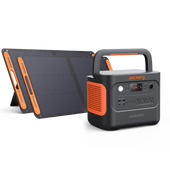

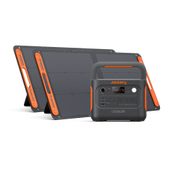
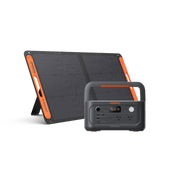
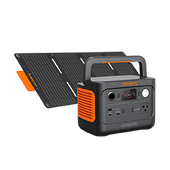


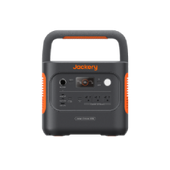
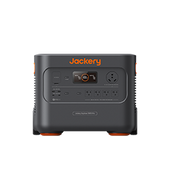
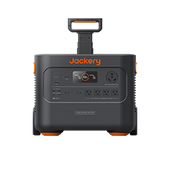

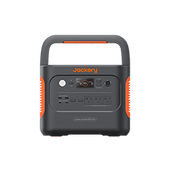
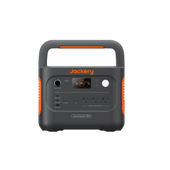
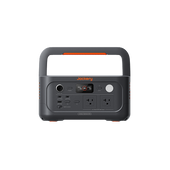

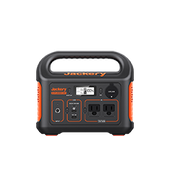
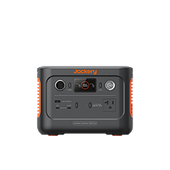

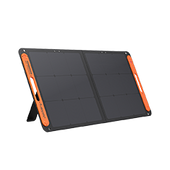

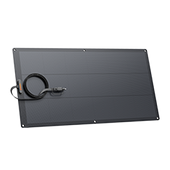
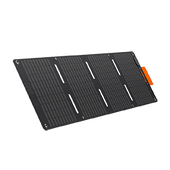
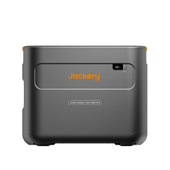
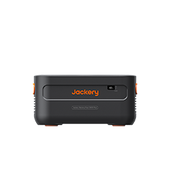
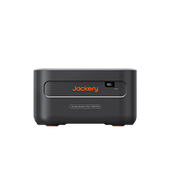
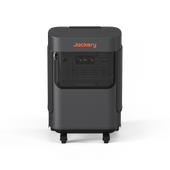
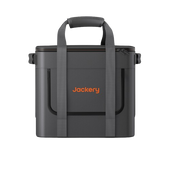

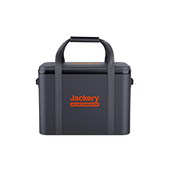
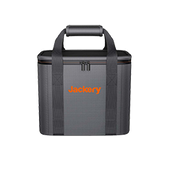
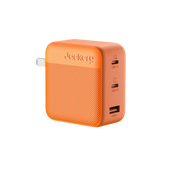
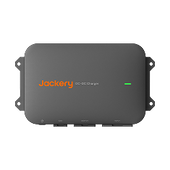
![[Add-on] Jackery Manual Transfer Switch for Explorer 5000 Plus](http://ca.jackery.com/cdn/shop/files/add-on-jackery-manual-transfer-switch-for-5000-plus-240V.webp?v=1757043692&width=170)
